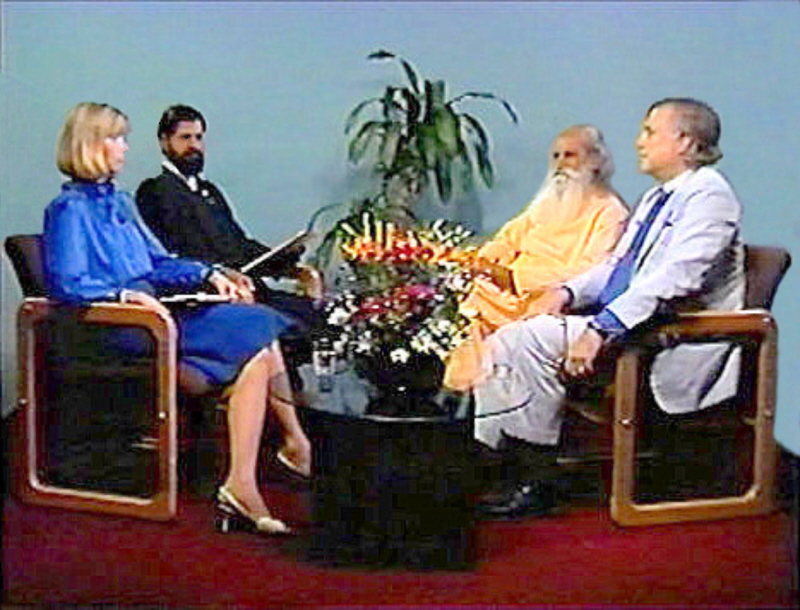

Embrace Foundation Retreat Center
Embrace.Foundation (skype messaging) - 011+1+212.675.4500 (New York)
Click to Email Us
GLOBAL CURRENCY
The BRIC Currency Swap Proposal Is A Global Game Changer
S.N. Kapadia is a Geopolitics Researcher at Gateway House: Indian Council on Global Relations, based in Mumbai, India.

At the last BRICS summit held in March in New Delhi, development banks of the participating countries agreed on a
proposal to extend credit in local currency for trade, project financing and infrastructure projects.
So far, no clear mechanism on how they will extend local currency credit has been announced. Some financial gurus even
dismiss the BRICS agreement as purely symbolic. Yet banks in London, New York, Tokyo and Singapore would be wise to
take a second look at what now could be the most significant agreement in international finance since the euro.
BRICS countries make up a massive trade bloc. Current intra-BRICS trade stands at $307 billion; it is set to reach $500
billion by 2015. Within BRICS, China is the dominant country, exporting $135 billion in goods and services a year to its
partners. India imports $50 billion annually from China and Chinese goods account for 11.8% of India’s total imports,
increasing their share of the Indian market by 2% in just four years.
As trade increases, China could move swiftly to provide renminbi for importers of Chinese goods.
At this time, China facilitates payment in renminbi through a central bank liquidity swap. Since 2009, 16 countries have
exchanged local currencies for a total of 1.6 trillion renminbi; more are in line to participate-Japan and Great Britain are
rumored to be in queue. But after the Delhi meeting, China’s BRICS partners may leapfrog and be next on the list.
From BRICS, Russia is currently the only country that swaps its currency with China-India, Brazil, and South Africa should
take note.
Four factors make a central bank liquidity swap particularly important. First, BRICS countries are losing purchasing power
because of depreciation against the dollar.
The dollar accounts for 40% of global foreign exchange trade. But it’s getting harder for BRICS to buy dollars. Brazil has
seen its currency depreciate by over 16% since February 2012 and the Indian rupee fell to an all-time low of 56.51 to the
dollar on Thursday, losing more than 20% of its value in the last 12 months. India is paying more for dollars than it has done
in over a decade.
Second, following the 2008 financial crisis, rupee-dollar exchange rate volatility has increased by as much as 50%, making
it difficult to predict the cost of dollars.
This uncertainty places India in a tough situation, given rising prices for key commodities such as crude oil, a slowdown in
capital inflows and a current account deficit now at a decadal high of 4% of gross domestic product (GDP). India isn’t alone-
Brazil and South Africa face the same problem as their currencies have seen deviations of 25% to the dollar. Their current
account deficits too are high, at -2.1% and -3.4% of gross domestic product, respectively.
Third, there is an opportunity to save on transaction costs, which can cost Indian business up to 1-2% of a deal. Vladimir
Dmitriev, chair of the Russian development bank, suggested in the BRICS summit agenda that countries will save up to 4%
by entering into these agreements, saving on transaction costs, financing fees and currency fluctuations. Quick math
shows that at full potential, BRICS countries save $12.3 billion a year in banking services. India could save a whopping $2.3
billion.
Lastly, a central bank liquidity swap will benefit small business. With the credit rating agencies such as S&P downgrading
India, small- and mid-cap companies are struggling to get dollar loans at reasonable interest rates. Drawing on a swap line
from China, the Reserve Bank of India (RBI) can offer attractive loans to businesses through the Export-Import Bank in
renminbi to finance Chinese deals without having to worry about inadequate dollar supply.
There is geopolitical risk in this, however.
In the late 1950s, India entered into a similar currency agreement with the former Soviet Union largely for arms deals. But
India ran up a trade deficit and from 1955-76, Russia accumulated upwards of $350 million in non-convertible rupees.
As a result, Russia sought a strategic advantage from its poorer trading partner. India’s signature commodities such as tea
were re-exported by Russia to Western markets, shrinking India’s market share with key trading partners. Moscow even
petitioned for naval base rights. Prime minister Indira Gandhi refused, believing that the quid pro quo would threaten
regional security.
As with the Soviet Union then, so is the possibility with China now; India’s trade deficit with China is estimated to reach $60
billion by 2014-15.
In negotiating its rupee relationship with Russia, H.V.R. Iyengar, governor of RBI (1957-62), wrote to prime minister
Jawaharlal Nehru warning him of the dangers of such currency arrangements. Nehru ignored him, declaring that “political
compulsions far outweigh economic considerations”.
India’s motives now are economic. BRICS swaps save money on imports by freeing India from currency fluctuations and
reducing the cost of funds. The key for India will be to negotiate favorable terms of agreement. Only then will India’s
economic advantages outweigh the geopolitical risks of such a deal.
Samir N. Kapadia is researcher, geopolitical studies, at Gateway House: Indian Council on Global Relations.
Link to Article: http://www.businessinsider.com/a-big-move-for-brics-2012-6
Note from the author -
Brazil, India, Russia, and S. Africa will swap for renminbi because of the sheer quantity of imports - they'll buy $134 billion in
goods from China this year. So far, 16 other countries have done a currency swap with China. After the summit meeting,
the signal for us is that Brazil, India, and South Africa will be next.
With depreciating currencies, volatility, high interest rates from foreign banks, and an overall tough market environment,
BRICS swaps seem very likely in the near future.
Read more:
Rethinking the Global Money Supply
Less reliance on the U.S. dollar by international reserves would be widely beneficial
By Jeffrey D. Sachs
Less reliance on the U.S. dollar by international reserves would be widely beneficial
By Jeffrey D. Sachs
The People’s Bank of China jolted the financial world in March with a proposal for a new global monetary arrangement. The
proposal initially attracted attention mostly for its signal of China’s rising global economic power, but its content also has
much to commend it.
A century ago almost all the world’s currencies were linked to gold and most of the rest to silver. Currencies were readily
interchangeable, gold anchored exchange rates and the physical supply of gold stabilized the money supply over the long
term.
The gold standard collapsed in the wake of World War I. Wartime financing with unbacked paper currency led to
widespread inflation. European nations tried to resume the gold standard in the 1920s, but the gold supply was insufficient
and inelastic. A ferocious monetary squeeze and competition across countries for limited gold reserves followed and
contributed to the Great Depression. After World War II, nations adopted the dollar-exchange standard. The U.S. dollar was
backed by gold at $35 per ounce, while the rest of the world’s currencies were backed by dollars. The global money stock
could expand through dollar reserves.
President Richard Nixon delinked the dollar from gold in 1971 (to offset the U.S.’s expansionary monetary policies in the
Vietnam era), and major currencies began to float against one another in value. But most global trade and financial
transactions remained dollar-denominated, as did most foreign exchange reserves held by the world’s central banks. The
exchange rates of many currencies also remained tightly tied to the dollar.
This special role of the dollar in the international monetary system has contributed to the global scale of the current crisis,
which is rooted in a combination of overly expansionary monetary policies by the Federal Reserve and lax financial
regulations. Easy money fed an unprecedented surge in bank credits, first in the U.S. and then elsewhere, as international
banks funded themselves in the U.S. money markets. As bank loans flowed into other economies, many foreign central
banks intervened to maintain currency stability with the dollar. The surge in the U.S. money supply was thus matched by a
surge in the money supplies of countries linked to the U.S. dollar. The result was a temporary worldwide credit bubble,
followed by a wave of loan defaults, falling housing prices, banking losses and a dramatic tightening of bank lending.
China has now proposed that the world move to a more symmetrical monetary system, in which nations peg their
currencies to a representative basket of others rather than to the dollar alone. The“special drawing rights” of the
International Monetary Fund is such a basket of four currencies (the dollar, pound, yen and euro), although the Chinese
rightly suggest that it should be rebased to reflect a broader range of them, including China’s yuan. U.S. monetary policy
would accordingly lose its excessive global influence over money supplies and credit conditions. On average, the dollar
should depreciate against Asian currencies to encourage more U.S. net exports to Asia. The euro should probably
strengthen against the dollar but weaken against Asian currencies.
The U.S. response to the Chinese proposal was revealing.Treasury Secretary Timothy Geithner initially described himself
as open to exploring the idea; his candor quickly caused the dollar to weaken in value-which it needs to do for the good of
the U.S. economy. That weakening, however, led Geithner to reverse himself within minutes by underscoring that the U.S.
dollar would remain the world’s reserve currency for the foreseeable future.
Geithner’s first reaction was right. The Chinese proposal requires study but seems consistent with the long-term shift to a
more balanced world economy in which the U.S. plays a monetary role more coequal with Europe and Asia. No change of
global monetary system will happen abruptly, but the changes ahead are not under the sole control of the U.S. We will
probably move over time to a world of greater monetary cooperation within Asia, a rising role for the Chinese yuan, and
greater symmetry in overall world monetary and financial relations.
ABOUT THE AUTHOR
Jeffrey D. Sachs is director of the Earth Institute at Columbia University
This article appeared in Scentific American.com.
Embrace Foundation is a non-profit,
educational foundation set up to create
better understanding between people of
different religions, cultures, traditions and
world philosophies.
Embrace Foundation works to bring leaders
and scholars of world-wide religions,
cultures and philosophies together by
sponsoring forums, seminars, lectures and
developing an international exchange
program. Embrace Foundation is particularly
concerned with reaching the world public
through the media.
Purpose

Donations
Embrace Foundation is an all volunteer
organization. All donations go directly to
programs.
Embrace Foundation does not and has
never given permission to any outside
organization to solicit or receive
contributions on our behalf.
All donations should be made to Embrace
Foundation only via Paypal or by mail. All
donations are tax deductible. A receipt will
be emailed to you. Please click on the Pay
Pal link below to Donate.

Travel As An Interfaith Act
Embrace encourages all who can do so, to
learn about other traditions and cultures by
traveling as “Grassroots Diplomats.” We
hope that people every where become life
long students of our world-wide humanity.
“ In every man there is something wherein I
may learn of him, and in that I am his pupil.”
R.W.Emerson


Embrace Humanity

Great Visions - TV
Guests are: Swami Satchidananda &
the Rt. Reverend Dean Parks Morton

Embrace Archives
Limited Editions Gallery
Umrah - Jordan
Embrace Sacred Places

Monastery of Bahira - Syria
Embrace Foundation Universal

Monk Reading - Ethiopia
Thank you for making a donation.
Embrace Foundation International
- Great Visions TV
- Inspirations
- Media
- Possibilities
- Astrophysics, Quantum Physics & The Nature of Reality
- Deconstructing Nuclear Fission & Nuclear Waste
- Defense Industry as Community Builders
- Defense Industry As Energy Providers
- Global Water Shortages
- Innovative Technology
- Intelligent Communities & Development
- Pentagon & Non-Western Nations
- Recreating
- Resource Based Population
- Sharing Community Resources
- Protecting Human Rights
- Spiritual Ecology
- Syria
- Write to Us

